Olympus, now OM System, has always made a big deal of how its compact mirrorless cameras could kick DSLRs of old into touch. But were, and are, such claims justifiable? To find out, I put a classic Olympus mirrorless and comparable Canon DSLR head-to-head.
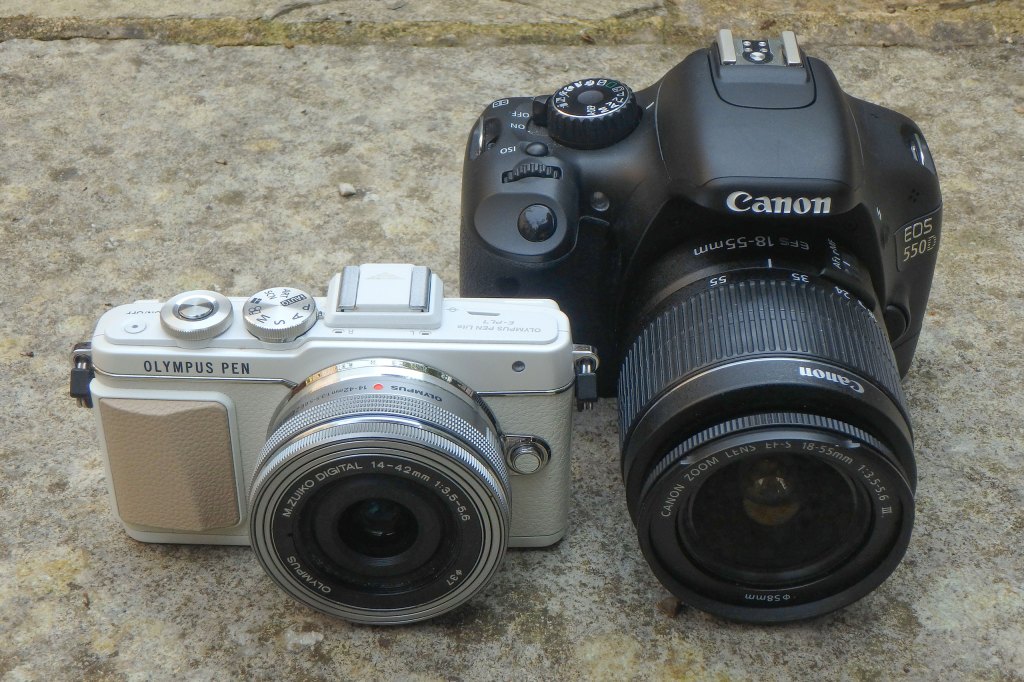
Just as smartphones put paid to compact point-and-shoots – before TikTok and Gen Z’s patronage unexpectedly revived their popularity – current thinking is that mirrorless cameras have killed off old-school DSLRs. Even if used DSLRs remain ever popular with cash-strapped photography students.
It’s certainly true that most manufacturers, apart from Pentax/Ricoh, have quietly shelved DSLR in favour of mirror-free capture. But, still, I want to put some existing preconceptions to the test, to answer this question:
Does mirrorless truly deliver comparable results to DSLRs, without its predecessors’ bulk?
For my little experiment, I’m pitting a classic, decade-old Olympus PEN E-PL7 or ‘PEN Lite’ mirrorless with 14-42mm f/3.5-5.6 compact power zoom lens against an Canon EOS 550D DSLR from a few years earlier, also known as the Rebel T2i, equipped with an 18-55mm f/3.5-5.6 zoom lens. Both lenses came bundled as part of the standard retail kit for each camera, providing me with a level-ish playing field.

What is the size difference between DSLRs and mirrorless?
The Canon EOS 550D is undoubtedly one of the most compact consumer-targeted DSLRs ever made. But it still can’t hold a candle, compactness wise, to my Olympus PEN E-PL7. Even when removing the Canon’s lens, I still struggle to fit the body in the roomiest of jacket pockets.
Not so the Olympus, which makes it a better option for street photography and spur of the moment capture. It also looks less like a ‘professional’ camera and is less likely to attract unwanted attention, even if I have been asked ‘is that a film camera?’ when using the digital E-PL7.
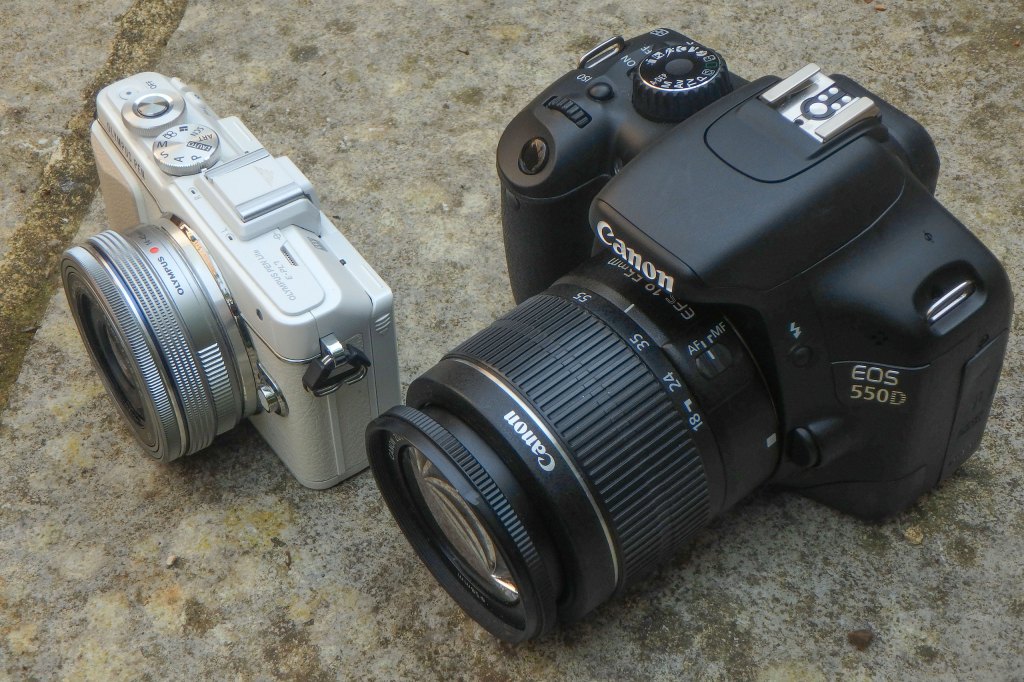
For direct comparison the Olympus body measures 115x67x38mm, making it not a great deal bigger than a pack of playing cards. That’s coupled with a manageable weight of 357g, which is not much more than what a toughened snapshot camera typically weighs.
By contrast the Canon EOS 550D – still very compact given the size of its sensor and image capture mechanism – measures 128.8×97.3x62mm and weighs 530g including battery and SD card, but without kit lens. In the hand the DSLR feels lighter than its traditional design indicates.
What are the handling differences of DSLR and mirrorless?
While the mirrorless alternative is lighter still and more pocketable, it’s not without modest compromises. The Olympus features a flatter, much less substantial grip than the Canon and, that, along with the proximity of its top plate dials, may appeal less to those with big hands than the broader Canon body.
Operationally the 550D does not over-complicate things, sticking to the easy-to-reach and activate essentials more in-keeping with beginner models than pro-grade DSLR alternatives. I don’t have huge hands, so it’s not an issue either way for me.
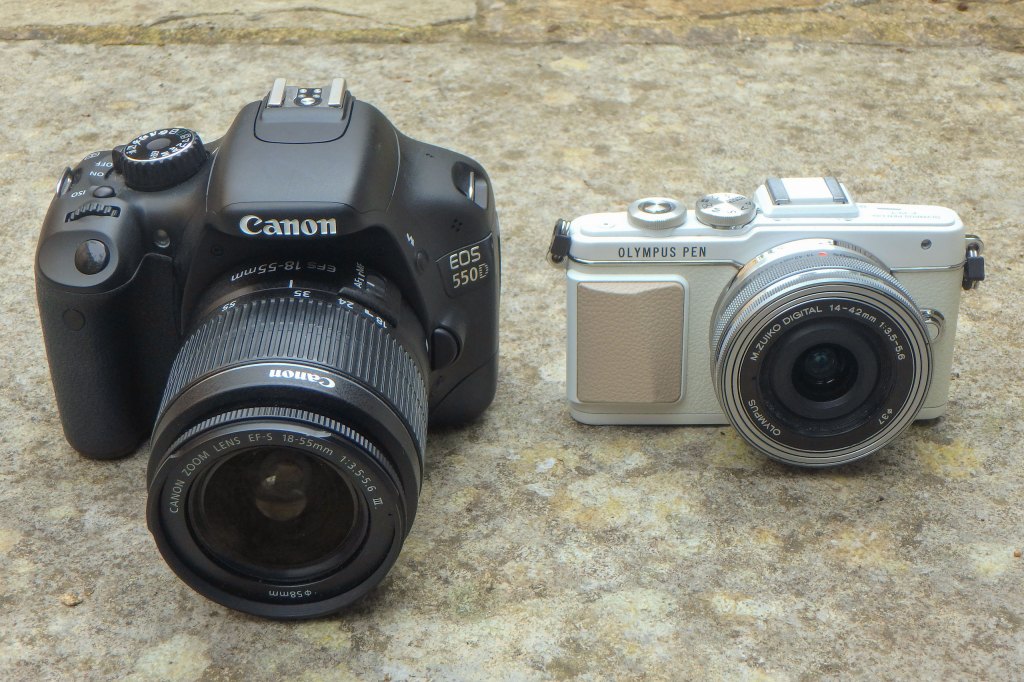
While the E-PL7 is my daily camera, so I can pick it up and use it without too much thought or preparation, I had not used the Canon in years. That said, it was surprising how quickly muscle memory kicked in, and I was thumbing buttons and spinning the DSLR’s top dial, while monitoring changes on the backplate LCD, to quickly and intuitively arrive at settings I thought would deliver the most pleasing results.
Touchy feely
One advantage the Olympus mirrorless has over the Canon DSLR is touch shutter operation. The ability to tap a preferred subject on screen allows me to get a shot I might otherwise miss while faffing around re-composing. The mirrorless E-PL7’s LCD can further be tilted so I am looking down on it to frame a shot. I use this so I don’t have to crouch or lie on the ground to get a shot. With the 550D’s fixed LCD there is no option but to get down and, possibly, dirty.
Benefits of the Canon DSLR
One thing the Canon provides that I miss on this Olympus mirrorless, however, is an eye-level viewfinder. This feature appeals because it allows me to frame a shot free from peripheral distraction. That same degree of focus, no pun intended, just isn’t possible when there’s merely one screen for composition and review. Reliance on the LCD means battery life is around 350 shots per charge for the mirrorless versus around 470 for the DSLR, one key area in which DSLR traditionally trumps its diminutive brethren.
Likewise in the Canon’s favour, theoretically, is its physically larger APS-C format CMOS sensor providing an 18-megapixel top resolution. It again looks the better option on paper compared with the mirrorless Olympus’ Four Thirds 16-megapixel resolution sensor.
Yet while the larger surface area of the former coupled with its slightly higher pixel count suggests better image quality, examining the results on screen it was much harder to see a sizeable difference between then. Much harder than when comparing, say, a 1/2.3-inch sensor snapshot and a mirrorless camera that, once again, is not much different, body-wise.
I did find the Canon’s 9-point AF underpowered by current standards, some 15 years on. Being from that 2010s era it also omits the in-body image stabilisation of the E-PL7, instead offering optical anti shake via suitably ‘IS’ enabled lens. I found it an easy camera to hold steady, nonetheless.
Image quality differences between DSLR and mirrorless?
In terms of comparable image quality when examining JPEGs straight from the camera there is again not a massive difference. In terms of colour, detail and exposure, if anything, the images from the Olympus look a bit more heavily processed and the Canon’s shots are a little flatter looking, which isn’t to criticise either. Variation in image quality alone is not enough to have me choosing one over the other.
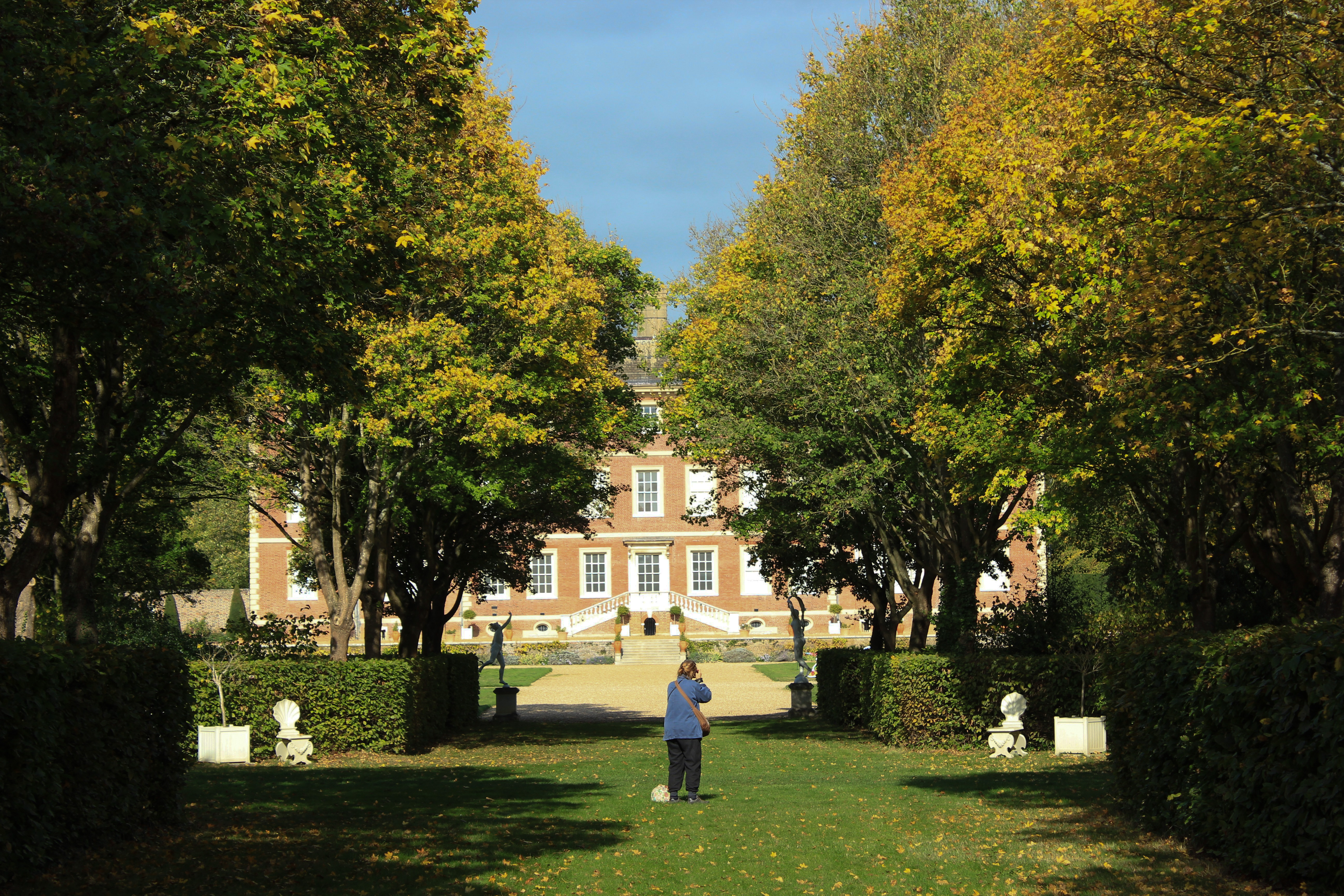
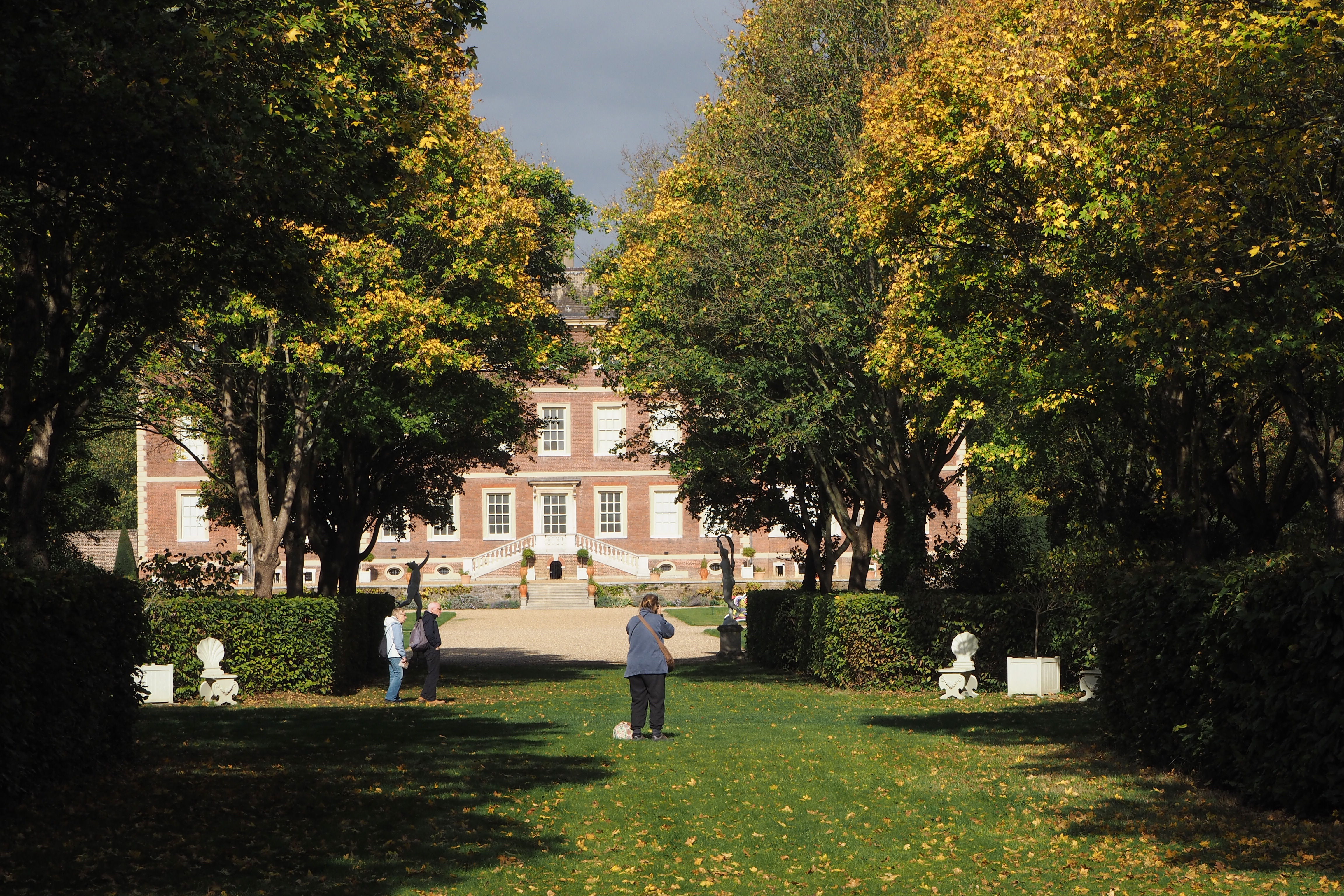
At the time of writing you can pick up the Canon EOS 550D/Rebel T2i for as little as $130/£100 used or pay very slightly more for body plus original 18-55mm lens; an absolute bargain considering what that amount will stretch to elsewhere. The Olympus PEN E-PL7 has held its value a little better than the Canon, which was the more expensive model when launched. That has now flipped and the Olympus’ median asking price second-hand is currently double that of the DSLR. Which still makes it very fair value.
So, in conclusion, if there’s anyone still hanging onto their bulky and heavy DSLR reluctant to go fully mirrorless for fear of compromise, don’t be concerned. At this point mirrorless makes practical sense, whether it’s an Olympus or any other photographic brand. And if you really do like the bigger body, then pro-level mirrorless, such as the Olympus OM-1 or Mark II with the ability to add a battery grip, has you covered.
Related reading









